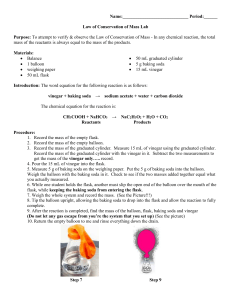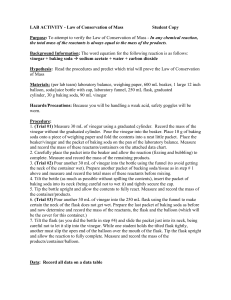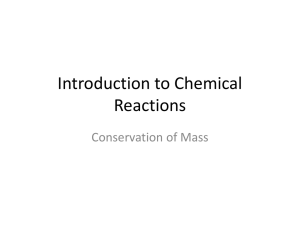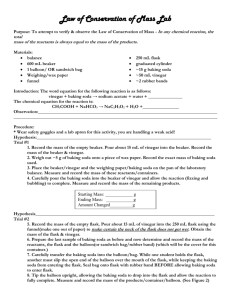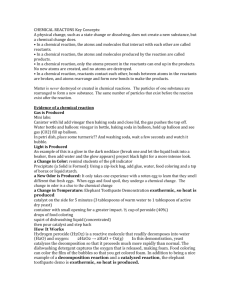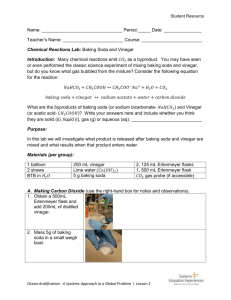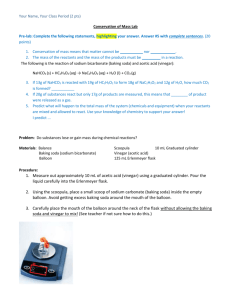How can we prove that mass is conserved in a...
advertisement
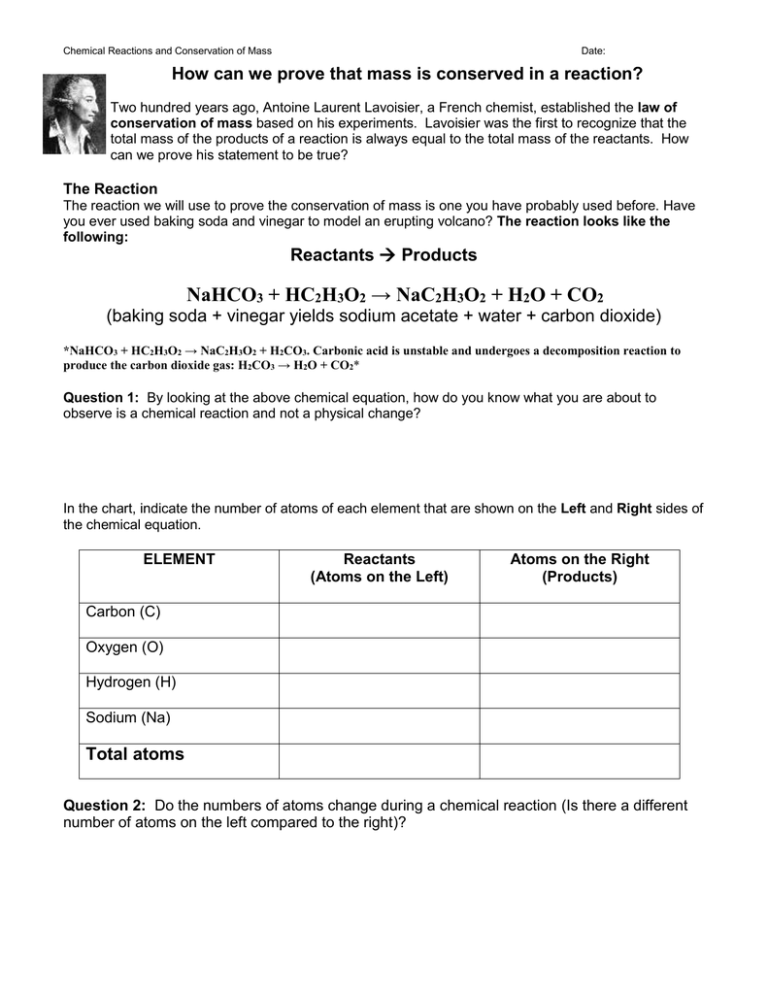
Chemical Reactions and Conservation of Mass Date: How can we prove that mass is conserved in a reaction? Two hundred years ago, Antoine Laurent Lavoisier, a French chemist, established the law of conservation of mass based on his experiments. Lavoisier was the first to recognize that the total mass of the products of a reaction is always equal to the total mass of the reactants. How can we prove his statement to be true? The Reaction The reaction we will use to prove the conservation of mass is one you have probably used before. Have you ever used baking soda and vinegar to model an erupting volcano? The reaction looks like the following: Reactants Products NaHCO3 + HC2H3O2 → NaC2H3O2 + H2O + CO2 (baking soda + vinegar yields sodium acetate + water + carbon dioxide) *NaHCO3 + HC2H3O2 → NaC2H3O2 + H2CO3. Carbonic acid is unstable and undergoes a decomposition reaction to produce the carbon dioxide gas: H2CO3 → H2O + CO2* Question 1: By looking at the above chemical equation, how do you know what you are about to observe is a chemical reaction and not a physical change? In the chart, indicate the number of atoms of each element that are shown on the Left and Right sides of the chemical equation. ELEMENT Reactants (Atoms on the Left) Atoms on the Right (Products) Carbon (C) Oxygen (O) Hydrogen (H) Sodium (Na) Total atoms Question 2: Do the numbers of atoms change during a chemical reaction (Is there a different number of atoms on the left compared to the right)? Proving that mass is conserved in a chemical reaction According to the Law of Conservation of Mass, the mass of the products of the reaction should be exactly equal to the mass of the reactants. Predict Do you think the reactants or the products will weigh more? ______________________________ Materials: Balloon Baking soda triple beam balance Erlenmeyer flask Vinegar Procedure: 1. Measure 50 ml of vinegar. Pour into a clean 125 ml Erlenmeyer flask. 2. Mass 10 g of baking soda. Use a funnel to pour into a balloon. 3. Place the reactants on the scale and record the mass in Box 1. 4. Remove the flask from the scale and carefully fit the balloon over the mouth of the flask. WarningDo not allow the baking soda to fall into the flask while attaching the balloon. This will start the reaction prematurely!!!!!! 5. Begin the reaction by lifting the end of the balloon with baking soda and releasing the baking soda into the flask. Record observations in Box 2. 6. When the reaction stops (no more bubbles), record the final mass in Box 3 7. Clean up by removing the balloon and place on the back table on the tray, Then pour the contents of the flask down the sink, rinse your flask and place the flask on the drying rack. As you conduct experiment, complete the following data table: Mass Before Mass of the reactants (including the balloon and flask) Observations during the reaction What evidence do you have that this is a chemical reaction? Mass after the Reaction Mass of the products (including the balloon and flask) 1 2 3 Mass difference (Subtract 3 from 1) Conclude: Answer the following questions on a separate piece of paper. DUE-Tuesday 1/20 What does this data indicate about the Law of Conservation of Mass? Based on your data, did this reaction occur in a closed system?

